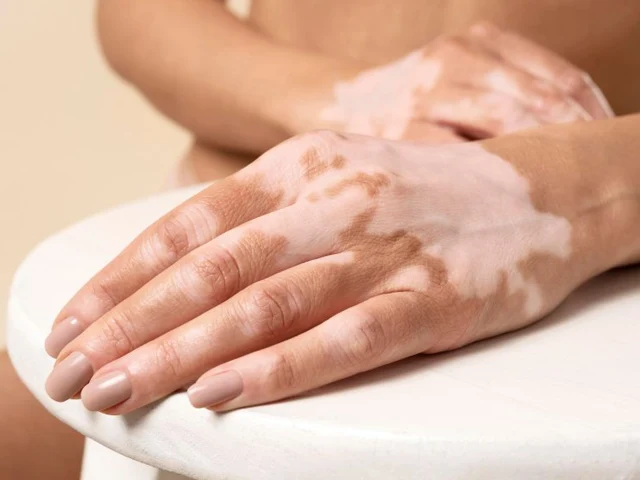
What is Vitiligo
What is Vitiligo? Science Behind The Mysterious White Patches on Skin
Vitiligo is a chronic skin disorder characterized by the loss of skin color in patches. These patches occur when melanocytes, the cells responsible for producing your skin’s pigment (melanin), are destroyed or stop functioning. Without melanin, the affected areas of skin turn a milky-white color. Vitiligo can affect people of all skin types, but naturally it is more noticeable in individuals with darker skin tones. This blog post will provide a comprehensive overview of vitiligo, but here are some basic facts first:
- Vitiligo is not contagious. You cannot catch it from someone else.
- It is not life-threatening or physically painful. However, the emotional and psychological impact can be significant.
- Occurance is unpredictable. The patches may stay the same, spread, or even disappear spontaneously.
- It affects about 1-2% of the population worldwide and can develop at any age regardless of gender.
Causes of vitiligo
The exact cause of vitiligo is not fully understood yet, but there are several known factors that can increase the risk of developing the condition. In most patients, it is known that a combination of these factors leads to the onset of the disease:
- Anemia
- Diabetes
- Psoriasis
- Autoimmune thyroid diseases (goiter)
- Stress
- Febrile illnesses (illnesses involving fever)
- Sunburn
- Severe physical trauma
- Genetic predisposition
Signs of vitiligo
The primary sign of vitiligo is the appearance of well-defined, pale or milky-white patches on the skin. Often, patches appear similarly on both sides of the body like on both hands or both knees).
Patches frequently first appear on sun-exposed areas like the face, hands, and arms. They also commonly occur in body folds (like the armpits), around the eyes, mouth, and navel, and in the genital area.
In addition to skin, hair on the scalp, eyebrows, or eyelashes may turn white or gray early. Also, vitiligo can also manifest itself inside the mouth and nose.
Vitiligo treatment options
At the beginning of the treatment, dermatologists determine the best course of treatment by identifying the type of the disease. It can either be Non-Segmental Vitiligo, the most common type characterized by symmetrical white patches on both sides of the body, or Segmental Vitiligo which typically starts earlier in life, causes patches to appear on one segment or side of the body, and is less common.
In either cases, there is no absolute cure for vitiligo, but treatments can help restore color, even out skin tone, and slow the progression of the disease. Here are the options:
- Topical Corticosteroids: These anti-inflammatory creams can help return color to small, new patches, especially in the early stages.
- Topical Calcineurin Inhibitors: A non-steroidal option that modulates the local immune response, ideal for sensitive areas like the face and neck.
- Narrowband UVB Phototherapy: This is the gold standard for treating widespread vitiligo. It involves exposing the skin to a specific wavelength of UVB light several times a week under medical supervision.
- Excimer Laser: This device delivers a targeted beam of UVB light to specific patches, making it an excellent option for localized, smaller areas.
- Surgical Treatments: For stable vitiligo that hasn’t responded to other therapies, surgical options may be considered. These involve transplanting healthy pigment-producing cells from one area of your body to the affected areas. Techniques include suction blister grafting and mini-grafting.
- Depigmentation: In cases where vitiligo covers a very large portion of the body (over 50%), depigmentation may be an option. This involves using a topical medication to permanently lighten the remaining pigmented skin to match the white patches.
- Cosmetics: Specialized concealers and self-tanning products can effectively camouflage white patches.
- Sunscreen: This is crucial. The affected skin has no natural protection against the sun. Daily use of a broad-spectrum SPF 30+ prevents sunburn and reduces the contrast between tanned and vitiligo-affected skin.
Modern dermatology against vitiligo
The visible nature of vitiligo can understandably affect a person’s self-esteem and emotional well-being. Seeking support from a mental health professional, connecting with others through support groups, and educating yourself about the condition are all vital steps in managing the psychological impact.
If you are concerned about white patches on your skin, we encourage you to schedule a consultation. A dermatologist can provide an accurate diagnosis and work with you to create a personalized treatment plan that meets your goals and helps you feel confident in your skin.



